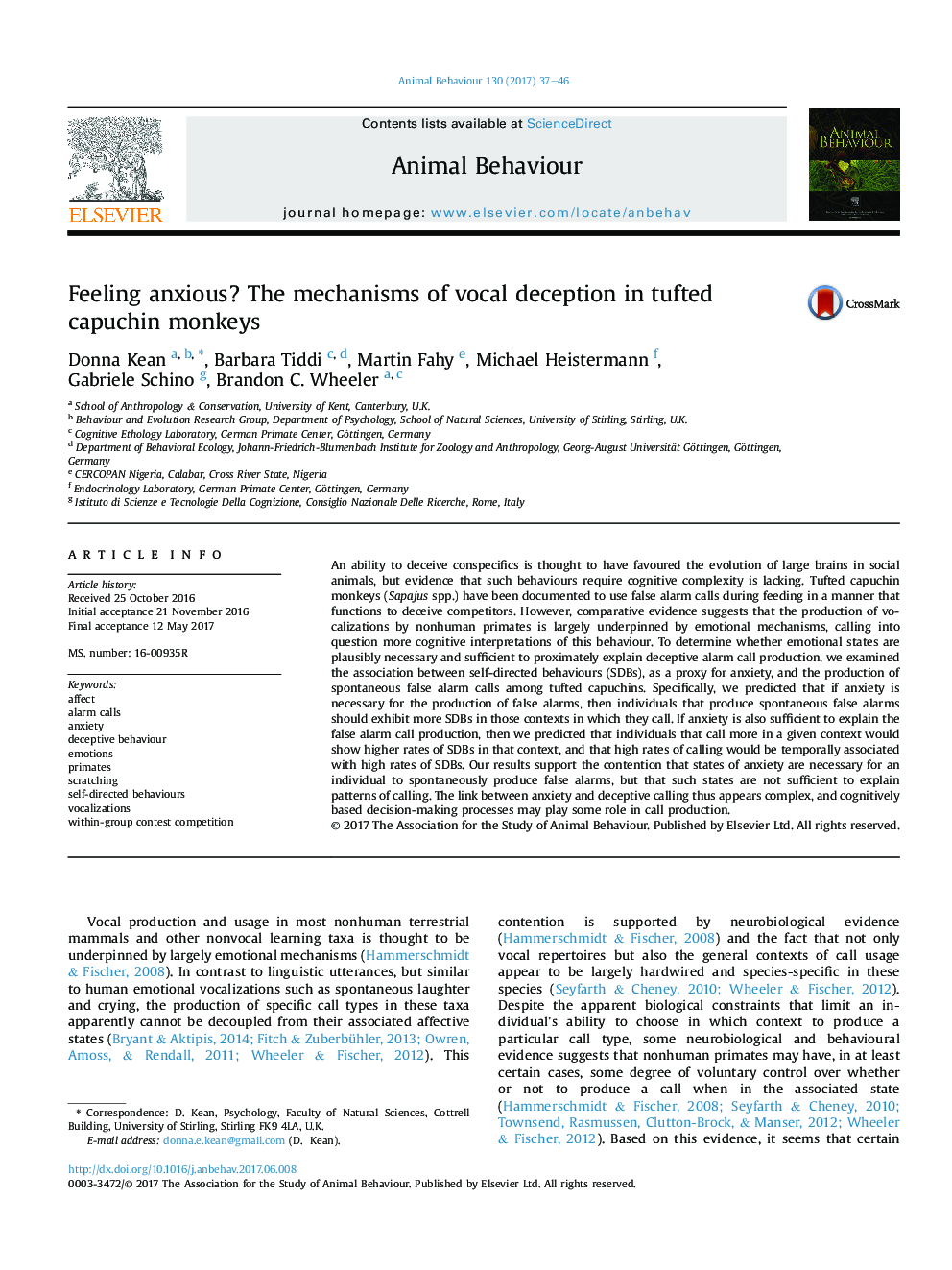| کد مقاله | کد نشریه | سال انتشار | مقاله انگلیسی | نسخه تمام متن |
|---|---|---|---|---|
| 5538404 | 1552198 | 2017 | 10 صفحه PDF | دانلود رایگان |
عنوان انگلیسی مقاله ISI
Feeling anxious? The mechanisms of vocal deception in tufted capuchin monkeys
ترجمه فارسی عنوان
احساس اضطراب؟ مکانیزم های فریب آوازی در میمون های قهوه ای توفان
دانلود مقاله + سفارش ترجمه
دانلود مقاله ISI انگلیسی
رایگان برای ایرانیان
کلمات کلیدی
موضوعات مرتبط
علوم زیستی و بیوفناوری
علوم کشاورزی و بیولوژیک
علوم دامی و جانورشناسی
چکیده انگلیسی
An ability to deceive conspecifics is thought to have favoured the evolution of large brains in social animals, but evidence that such behaviours require cognitive complexity is lacking. Tufted capuchin monkeys (Sapajus spp.) have been documented to use false alarm calls during feeding in a manner that functions to deceive competitors. However, comparative evidence suggests that the production of vocalizations by nonhuman primates is largely underpinned by emotional mechanisms, calling into question more cognitive interpretations of this behaviour. To determine whether emotional states are plausibly necessary and sufficient to proximately explain deceptive alarm call production, we examined the association between self-directed behaviours (SDBs), as a proxy for anxiety, and the production of spontaneous false alarm calls among tufted capuchins. Specifically, we predicted that if anxiety is necessary for the production of false alarms, then individuals that produce spontaneous false alarms should exhibit more SDBs in those contexts in which they call. If anxiety is also sufficient to explain the false alarm call production, then we predicted that individuals that call more in a given context would show higher rates of SDBs in that context, and that high rates of calling would be temporally associated with high rates of SDBs. Our results support the contention that states of anxiety are necessary for an individual to spontaneously produce false alarms, but that such states are not sufficient to explain patterns of calling. The link between anxiety and deceptive calling thus appears complex, and cognitively based decision-making processes may play some role in call production.
ناشر
Database: Elsevier - ScienceDirect (ساینس دایرکت)
Journal: Animal Behaviour - Volume 130, August 2017, Pages 37-46
Journal: Animal Behaviour - Volume 130, August 2017, Pages 37-46
نویسندگان
Donna Kean, Barbara Tiddi, Martin Fahy, Michael Heistermann, Gabriele Schino, Brandon C. Wheeler,
